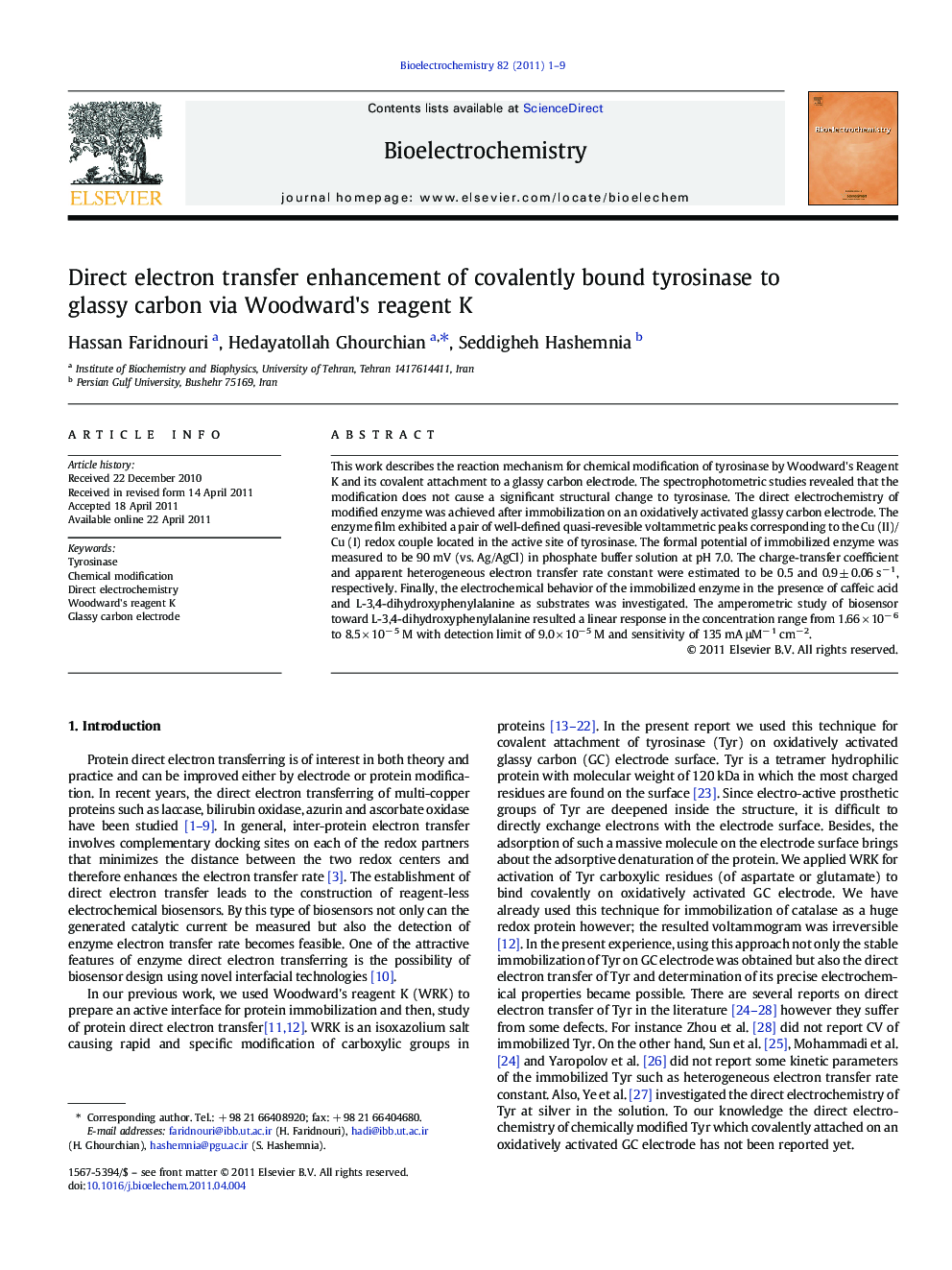| Article ID | Journal | Published Year | Pages | File Type |
|---|---|---|---|---|
| 1274603 | Bioelectrochemistry | 2011 | 9 Pages |
This work describes the reaction mechanism for chemical modification of tyrosinase by Woodward's Reagent K and its covalent attachment to a glassy carbon electrode. The spectrophotometric studies revealed that the modification does not cause a significant structural change to tyrosinase. The direct electrochemistry of modified enzyme was achieved after immobilization on an oxidatively activated glassy carbon electrode. The enzyme film exhibited a pair of well-defined quasi-revesible voltammetric peaks corresponding to the Cu (II)/Cu (I) redox couple located in the active site of tyrosinase. The formal potential of immobilized enzyme was measured to be 90 mV (vs. Ag/AgCl) in phosphate buffer solution at pH 7.0. The charge-transfer coefficient and apparent heterogeneous electron transfer rate constant were estimated to be 0.5 and 0.9 ± 0.06 s− 1, respectively. Finally, the electrochemical behavior of the immobilized enzyme in the presence of caffeic acid and L-3,4-dihydroxyphenylalanine as substrates was investigated. The amperometric study of biosensor toward L-3,4-dihydroxyphenylalanine resulted a linear response in the concentration range from 1.66 × 10− 6 to 8.5 × 10− 5 M with detection limit of 9.0 × 10−5 M and sensitivity of 135 mA μM− 1 cm− 2.
Research highlights► The reaction mechanism for chemical modification of tyrosinase by Woodward's reagent K and its covalent attachment to glassy carbon electrode was presented. ► The modification did not cause distinguished changes in tyrosinase structure and activity. ► Using this modification the direct electrochemistry of enzyme was achieved. ► Due to the covalently attachment of enzyme to the electrode surface, a satisfactory storage and operational stability was obtained for the immobilized enzyme.
